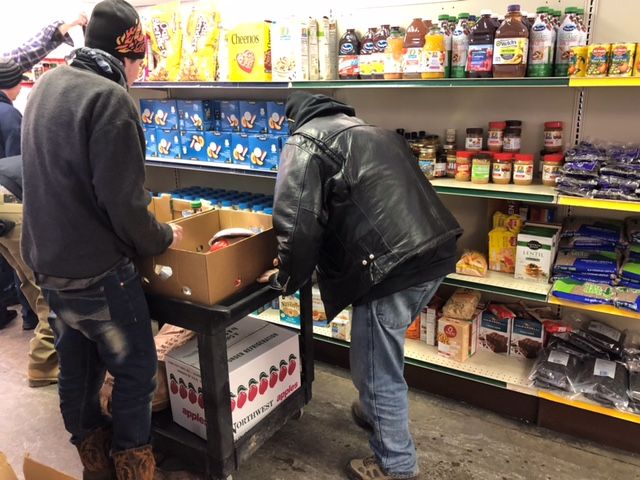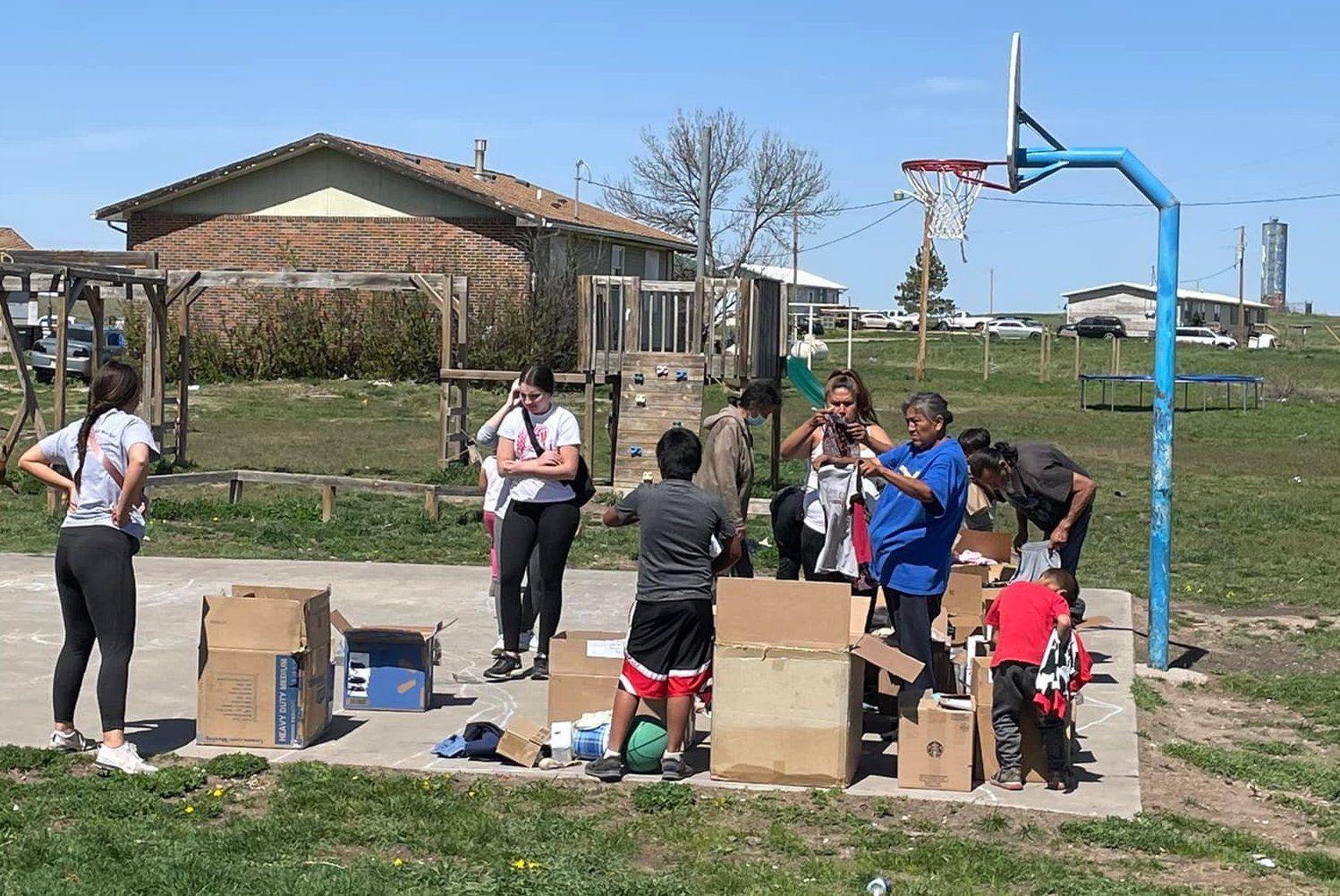When Tyson Wade of Britton , S.D., moved to Sioux Falls in 2021, he never expected that even with a steady job, he would struggle financially and be on the verge of homelessness.
But like everyone in South Dakota and across the U.S., Wade is enduring the effects of stubborn economic inflation that is driving up costs for basic necessities and which is having a much larger impact on young adults in entry-level positions, people with low-wage jobs or those who live on fixed incomes.
Wade, 20, works as an overnight stocker at a Hy-Vee grocery store. When he moved to the city, he signed a lease for an apartment in northeast Sioux Falls with two roommates, splitting the $900 monthly rent payment three ways. Recently, each roommate’s share of the rent increased $50 per month — a smaller jump than many other renters across the state have seen but still a burdensome new cost.
Yet in addition to increased rent, Wade is paying significantly more for groceries, utilities and other necessary goods than even a few months ago. His grocery bill has gone up the most, nearly doubling in recent months from about $80 to $140 per month.
“Meats are the biggest thing; they’re around $7.29 now per pound,” Wade said. “Paper towels, toilet paper, that stuff’s all gone up at least a dollar.”

While gas costing nearly $5 a gallon may be a big budget expense for many South Dakotans, Wade is unable to drive due to an eye condition that affects his vision. Fuel and car insurance aren’t in his list of bills, but lack of transportation also decreases his housing options.
Wade is now looking for an alternative living situation, but he and a potential roommate were denied a new application at his current apartment complex due to income restrictions.
“You have to make over three times rent, so we couldn’t sign a new lease,” he said. Wade asked about whether a co-signer could help secure the lease, but the apartment manager said a co-signer had to have a minimum 680 credit score or make well over three times the monthly rent, which will be difficult for Wade to pull off.
“We’re hoping we’ll be able to find a cosigner, otherwise I won’t be living here anymore,” he said.
Wade isn’t the only South Dakotan faced with unexpected costs and hard choices. With the national inflation rate at 8.6%, and the Midwest inflation rate at 8.8% in late June, the cost of living is rising fast and many people are scrambling to keep up.
Food costs have gone up 12% in South Dakota, leading many to change their food budgets and causing some people on the economic margins to seek help providing food for themselves or their families.

Many communities have public food banks or distribution services available for those who may need assistance in securing food. The group Feeding South Dakota, a statewide provider of charitable food, is partnering with some local communities with a “mobile food pantry” to serve the growing need. Feeding South Dakota has permanent food bank locations in Sioux Falls and Rapid City, but the organization’s website also allows users to find mobile options closest to them.
Many other localized organizations also give out food to those in need. First Families Now, based in Porcupine, S.D., serves needy residents of the Pine Ridge Indian Reservation.
The group also runs donation drives to provide essential items such as heaters and blankets, clothing, and school supplies along with many other programs. The group is working to bring more resources to the communities it serves, including providing a tutor for local children, offering various activity classes, and focusing on healthy lifestyles and healing, said Executive Director Alice Phelps.
Phelps said the group continues to provide food and help to families in need, but has recently seen a drop in donations and people willing to donate as inflation has continue to push costs higher for everyone.
“I used to get a lot of monetary checks and stuff as well to help out, and I don’t hardly get anything like that anymore,” said Phelps. “The donation load has seemed to lighten up as well. When we give out food boxes, they’re not as full as they used to be because I want to make sure that we spread it out evenly.”
Increasing transportation costs — both in regard to high gas prices and in higher costs to buy a vehicle — are also adding difficulty to the lives of those on low or fixed incomes in South Dakota. With gas prices nearly doubled from a year ago, people in the communities served by First Families Now aren’t able to come to distribution events, preventing families from accessing the resources they need.
“Those who can’t come in, then we have my sons who go out into communities,” she said. “There’s many people who are really, really, really poor. They don’t even have furniture in their house, much less food, so we try to make sure we transport stuff out there to them.”
Phelps said that First Families Now is also in the planning stages of building “tiny homes” for those in need of safe, affordable homes to address the housing challenges that have been made worse by inflation on South Dakota reservations.
Inflation driving up costs of necessities
Here is a look at the average cost of some necessities in June 2022 compared to June 2021 in the United States, indicating how inflation and other factors have put more economic pressure on individuals and families to make ends meet.
Product 2021 cost 2022 cost Percent increase
Gas $3.13 a gallon $4.77 a gallon 52%
Food $945 a month $1,193 a month 26%
Rent $1,899 a month $2,047 a month 8%
Note: Rent is national average for two-bedroom apartment; food cost is for U.S> family of four; sources include American Automotive Association, U.S. Department of Agriculture, Rent.com
Across the state, housing has become more expensive with the rise in inflation, leaving some residents with few affordable options and others unable to afford buying a home or renting an apartment.
Section 8 Housing Choice Vouchers are an option available to qualifying low-income families in some locations. These vouchers are funded by the U.S. Department of Housing and Urban Development and are awarded by local housing agencies. At this time, 23 local agencies operate across the state to provide help through the voucher program. Twenty-six others provide affordable housing options through public housing programs.
Childcare is another necessity for many South Dakota families, and it has recently become tougher to obtain or maintain. Many childcare providers in South Dakota are in-home or small operations, and they have also faced higher costs for providing services to parents and children.
Shipping costs of products have also become more expensive, leading to higher costs of commodities like food, wipes, and infant formula. Often, those higher costs are passed on to customers who may already face difficulty in paying for child care necessary to care for children while keeping a job.
Nicole Jones, who runs BumbleBee Daycare in Marshall County, S.D., said she has faced increases in groceries and water and electric bills. These added expenses, coupled with shortages of many goods and supplies, have led to losses in new registrations and reduced operating hours for many childcare facilities in the state.
“We’re losing some kids because of everything going up in price, and people aren’t willing to pay [for childcare] because they can’t afford it,” said Jones.




